One of the most influential designers of the mid-20th century
Gio Ponti (1891-1979) was a poet, painter, industrial designer and founding editor of Domus magazine as well as an architect. Through his designs and his work at Domus, he was the godfather of Italy’s post-war design renaissance.
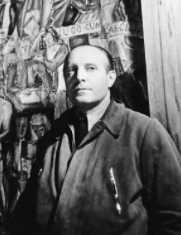
Image source: https://www.wright20.com/auctions/2015/06/design/248
Gio Ponti helped to establish Italy as a global design center through a diverse career that spanned architecture, industrial design, art, and even publishing. However, his career might never have begun if history had intervened only a bit more. Born and raised in Milan, Ponti decided upon a career in architecture as a young man and enrolled in in the architecture program at Politecnico di Milano University.
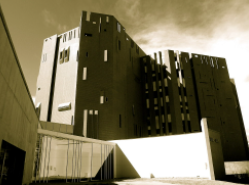
Image source: https://search.creativecommons.org/photos/fd3fa86f-653b-4fed-9ff8-60c4208bf21a by Ishrona
What are the main architectures of Gio Ponti?
Ponti began his architectural career in partnership with Mino Fiocchi and Emilio Lancia from 1923 through 1927, and then through 1933 with Lancia only, as Studio Ponti e Lancia PL. In these years he was influenced by and associated with the Milanese neo-classical Novecento Italiano movement. Output of the time includes the 1925 house on Via Randaccio in Milan, the 1926 Bouilhet villa in Garches, Paris, the 1929 Monument to the Fallen with the Novecento architect Giovanni Muzio, the Casa Rasini apartment blocks in Milan, and the 1930 Domus Julia–Domus Fausta complex on Via Letizia. Around 1933, Ponti ended his relationship with Lancia and teamed with two engineers, Antonio Fornaroli and Eugenio Soncini, to form Studio Ponti-Fornaroli-Soncini which would last until 1945. Their first major commission was the 1936 company headquarters for the Italian chemical firm Montecatini, followed by a number of other industrial and university commissions through the war years, offices for Fiat, and the Palazzo del Liviano for the University of Padua in which Ponti himself painted frescos. Ponti in 1950 won the commission to design the 32-story Pirelli Tower in collaboration with Pier Luigi Nervi and Arturo Danusso. This was the second skyscraper built in Milan, and likely the climax of Ponti’s entire career. Construction began in 1956.
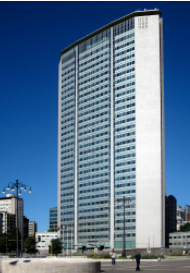
Image source: https://search.creativecommons.org/photos/27aea493-c5a7-4723-94bf-9cf85da5ce4a , IK’s World Trip
What was Domus?
In 1928, Ponti started Domus, an architecture and design magazine that would allow him to express his ideas regarding the artistic movement, Novecento, and also to show-case the best of Italian design. Ponti is famous for having been a major part of the Novecento, a counter-movement to Rationalism. Followers of Novecento were interested in creating art that expressed the ideas of Fascism. Their goal was to revive the traditional and classical art of Italy, and reject the European Avant Garde Movement. Domus became one of the most influential magazines in Europe. From 1941 to 1947, Ponti left Domus to found a new magazine called Stile. In his absence, the direction of the magazine had changed to advocate rationalist ideas. Upon his return, Ponti redirected Domus, and used it as a venue to display his favorite designers.
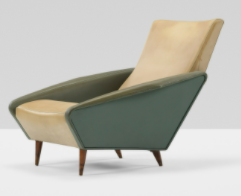
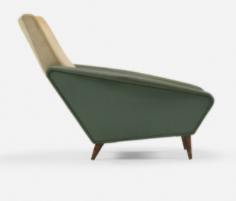
Images source: https://www.wright20.com/auctions/2015/06/design/248
Which are the main works of Gio Ponti?
In 1923 Ponti made his public debut at the first Biennial Exhibition of the Decorative Arts in Monza, which was followed by his involvement in organising the subsequent Triennial Exhibitions of Monza and Milan. From 1923 to 1930 Ponti worked at the Manifattura Ceramica Richard Ginori, in Milan and Sesto Fiorentino, changing the company’s whole output. Other industrial design work includes:
- a line of furnishings for the Rinascente department stores, under the name Domus Nova
- ceramic objects production: maiolica vases, porcelain, sanitaryware (like sinks and toilets (e.g. those created for Richard Ginori and Ideal Standard)
- chairs: among others, he worked for Cassina designing an angular armchair, named “Distex“, and the very famous 1957 “Superleggera” (Superlight) chair, which was very strong but also so light that it could be lifted up by a child using just one finger. Also very famous is the “Due Foglie” sofa.
- glass bottles: he designed stylish, colourful glass bottles for various companies such as Venini.
- lamps: for companies such as Artemide, Fontana Arte, and Venini, he created two types of lamps- those provided with very shining, intense colours, and those with a minimalist aesthetic, simple and essential. Among the latter, one of the most famous is the “Billia” lamp, which looks modern today while it was designed for Fontana Arte in 1931.
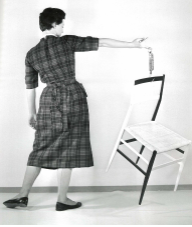
Image source: https://search.creativecommons.org/photos/ef761c34-d101-41af-a106-785b3c194c76 by bianca.maggio
Info source:
http://design.designmuseum.org
http://www.primaveragallery.com
For more references, please also visit: http://www.jbdesign.it/idesignpro
